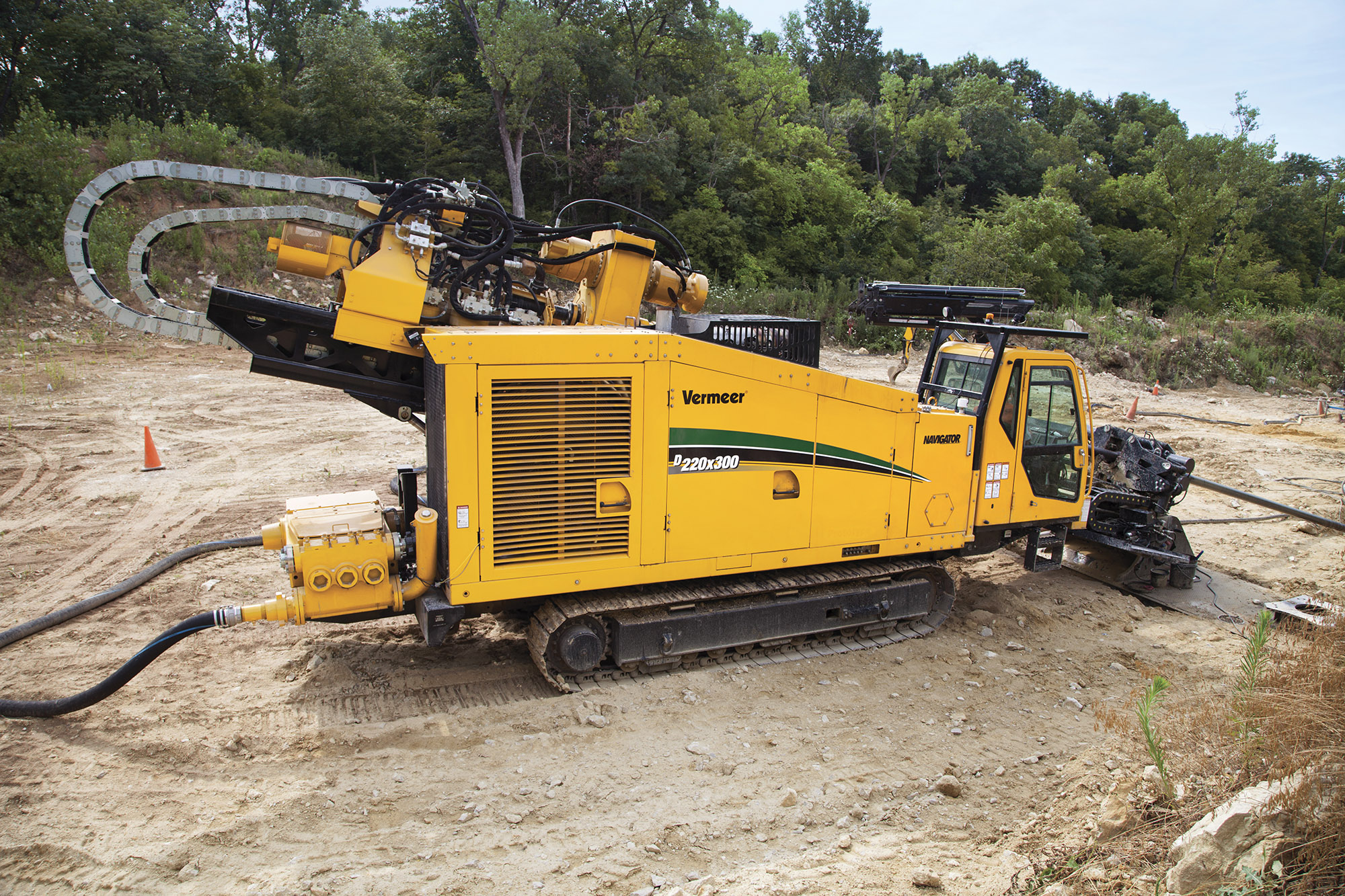
If such a utility is found, i.e, a clay or plastic storm or sanitary sewer, a transmitter is inserted into the pipe and traced. Non-metallic pipes do not accept, produce or transmit an electromagnetic frequency. By detecting the maximum signal strength at several locations, the surface trace of an underground utility can be determined. Often, buried electrical and telephone utilities radiate their own electromagnetic field and can be readily detected using the radio frequency (RF) receiver without inducing a current. This signal is carried by the conductor along its length and is detected above ground with radio frequency antenna. In order to detect these utilities using electromagnetic survey techniques, a radio frequency is induced onto the utility. Examples of these utilities include water, natural gas, fuel lines, electricity and telephone. The electronic instrument used to determine the position and strength of electro-magnetic signals emitted from a transmitter in the pilot head of a boring system, in an impact moling tool, or from existing services which have been energized.Įlectromagnetic methods are the most frequently employed techniques to detect underground utilities made of or containing conductive materials e.g. The basic premise behind an underground utility locator is that it works by producing and transmitting a signal onto a utility that is metallic that the receiver can detect. When you need to locate a pipe or utility cable underground, utility location equipment can help you find it easier and faster. Georgia Directional Drilling Utility Locating Services | Locator Machine Locating Utility Lines White: proposed excavation limits or route.

Pink: temporary survey markings, unknown/unidentified facilities. Purple: reclaimed water, irrigation, and slurry lines.

Yellow: natural gas, oil, steam, petroleum, or other gaseous or flammable material.

Orange: telecommunication, alarm or signal lines, cables, or conduit. Red: electric power lines, cables, conduit, and lighting cables. Colored lines, flags, or both are used to mark the location and denote the type of underground utility In the United States, the American Public Works Association (APWA) Uniform Color Codes for temporary marking of underground utilities are listed below. Utility color codes are used to identify existing underground utilities in construction areas, to protect them from damage during excavation. Georgia Directional Drilling Utility Locating Services | Sample Utility Color Codes


 0 kommentar(er)
0 kommentar(er)
